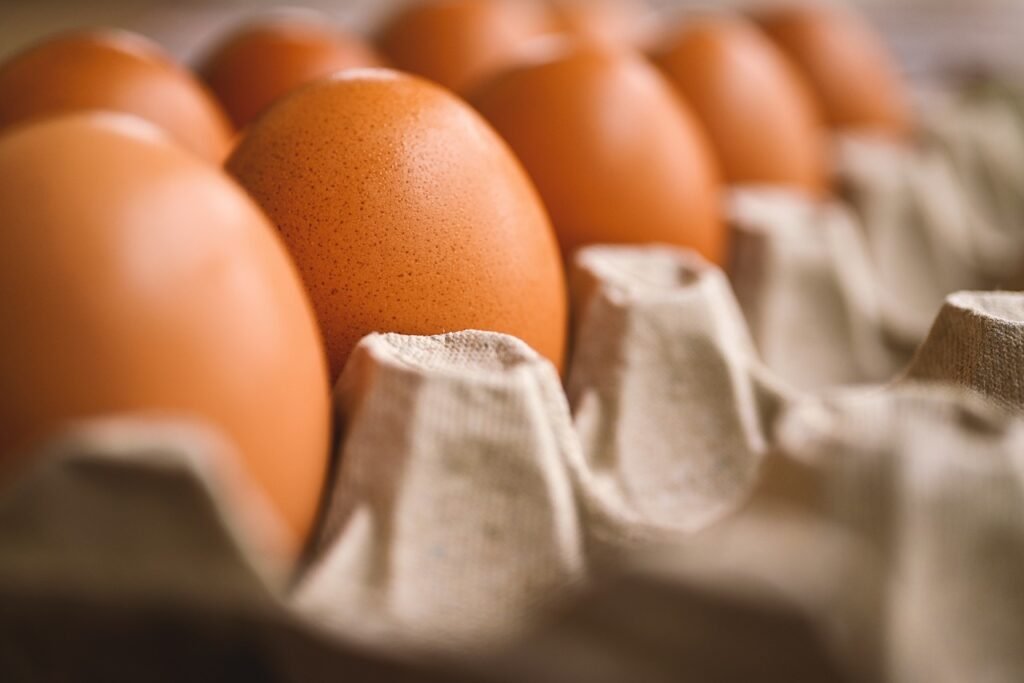Lettuce Growing Guide From Seed To Harvest To Health Benefits
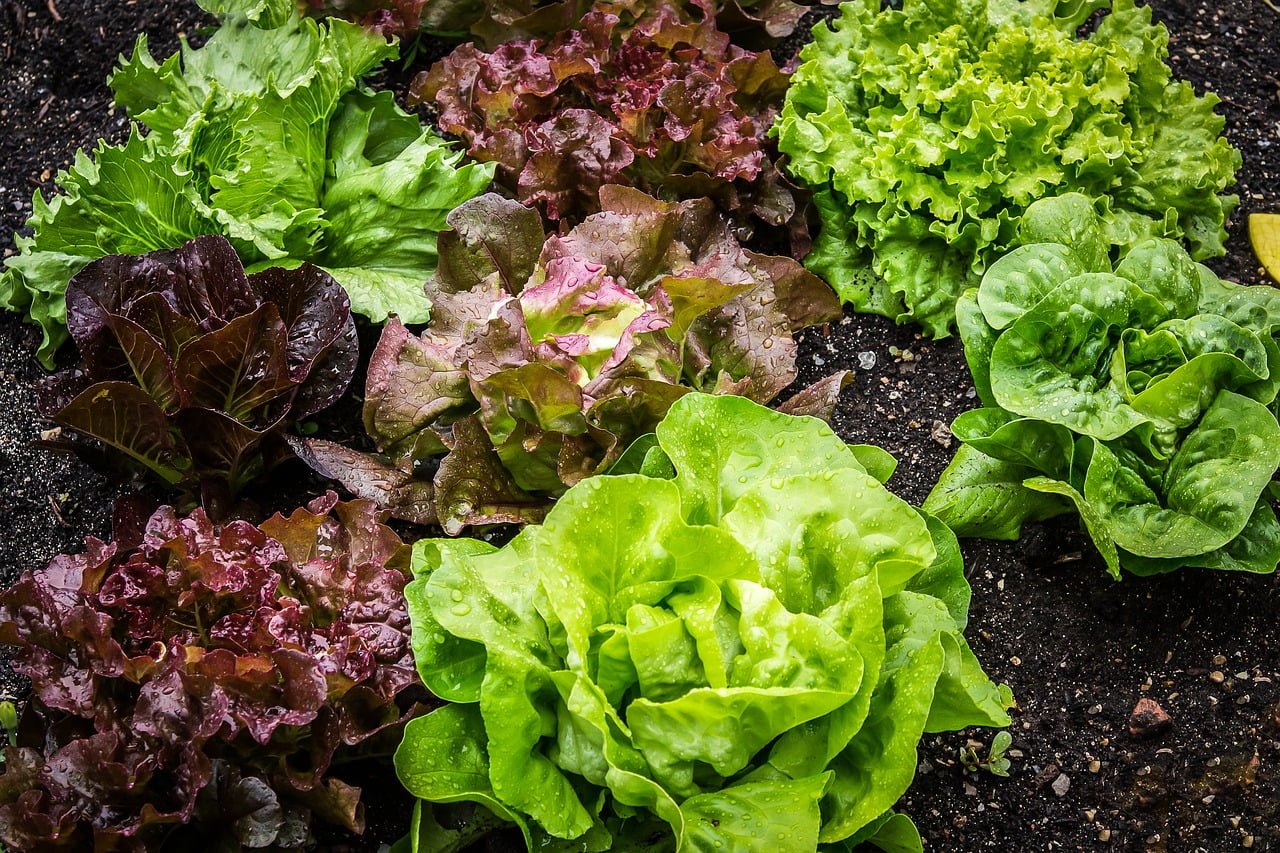
Looking to grow your own lettuce but not sure where to start?
In this comprehensive guide, we will take you through the entire process – from choosing the right location and preparing the soil to planting the seeds and caring for your lettuce plants.
We will also discuss the best time to harvest different types of lettuce and explore the numerous health benefits this leafy green has to offer.
So, let’s dive into the world of lettuce growing, from seed to harvest to health benefits.
How to Grow Lettuce?
Growing lettuce at home is a rewarding experience that allows you to enjoy fresh, crisp leaves right from your garden. To begin the process, you need to follow a comprehensive guide on planting lettuce seeds, caring for the plants, and ensuring they receive adequate soil, water, sunlight, and fertilization.
When choosing a location for your lettuce garden, opt for a spot that receives plenty of sunlight, as lettuce thrives well in full sun.
Once you have found the ideal location, it’s essential to prepare the soil by ensuring it is well-draining and rich in organic matter.
Sowing the seeds at the right depth and spacing is crucial for successful germination.
Regular watering is key to keeping the soil consistently moist but not waterlogged.
Incorporating a balanced fertilizer to provide essential nutrients will promote healthy lettuce growth.
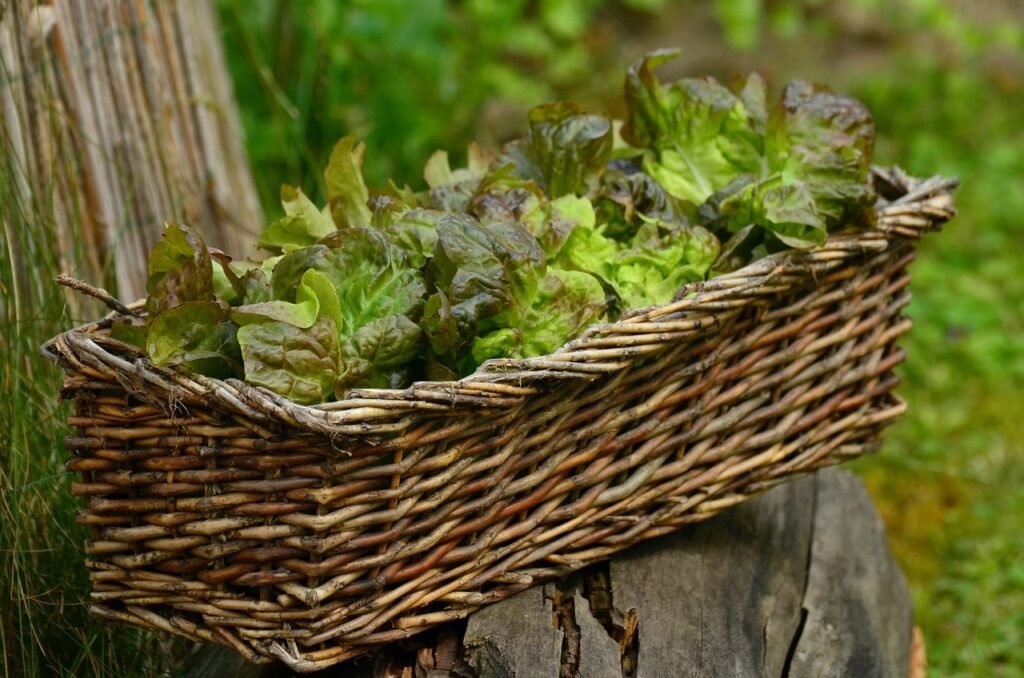
Choosing the Right Location
Selecting the optimal location for growing lettuce is crucial to ensure the plants receive adequate sunlight, proper soil conditions, and the right temperature for optimal growth. Consider the season and climate in your area to determine the best spot for your lettuce patch.
To assess the suitability of different areas for lettuce cultivation, examine the orientation of the site in relation to the sun’s path to ensure the plants receive ample sunlight throughout the day. Testing the soil quality for proper drainage, nutrient levels, and pH balance is essential for healthy lettuce growth.
Temperature requirements vary depending on the lettuce variety, so it’s important to choose a location that meets the specific needs of the type you plan to grow. Understanding how seasonal variations affect sunlight exposure and temperatures will help you make informed decisions when selecting a suitable location for your lettuce cultivation.
Preparing the Soil
Soil preparation is a critical step in growing healthy lettuce plants. Ensure that the soil is well-draining, rich in nutrients, and adequately mulched to support optimal growth and development. Incorporating compost into the soil can further enhance its fertility for lettuce cultivation.
By enriching the soil with organic matter such as compost, you ensure that the lettuce plants receive a balanced supplyof essential nutrients for robust growth.
Proper soil drainage is essential to prevent waterlogging, which can lead to root rot and stunted growth.
Mulching not only helps in retaining soil moisture but also aids in suppressing weed growth, providing a conducive environment for lettuce to thrive.
These steps collectively contribute to improved soil health and overall plant care, resulting in a bountiful lettuce harvest.
Choosing A Lettuce Variety
Choosing the right lettuce variety to grow in your garden can significantly impact the quality and enjoyment of your harvests. Lettuce comes in a wide array of types, each with its unique taste, texture, and nutritional benefits. The main categories include:
- Leaf Lettuce: Known for its fast growth and ease of harvesting, leaf lettuce varieties like ‘Oak Leaf’ and ‘Lollo Rossa’ provide a continuous yield of delicate, flavorful leaves.
- Romaine: With its crisp texture and hearty leaves, varieties such as ‘Parris Island Cos’ are ideal for Caesar salads and more substantial dishes.
- Butterhead: Offering a tender, buttery texture, ‘Buttercrunch’ and ‘Boston’ varieties form loose heads and are perfect for wraps and sandwiches.
- Iceberg: Known for its crispness and long storage life, Iceberg lettuce is great for traditional salads and adding crunch to burgers.
Exploring different types allows gardeners to enjoy a variety of flavors and textures, extending the salad season with early, mid, and late-harvesting options. Whether you’re crafting a mixed greens salad or a single variety dish, the right type of lettuce can elevate your culinary creations.
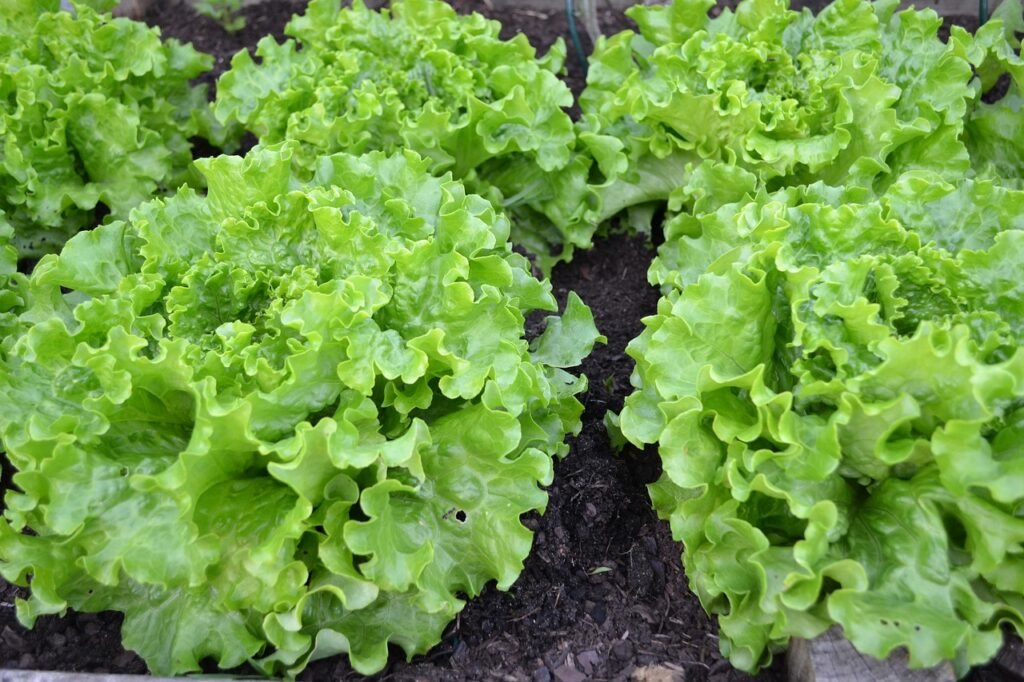
Planting Lettuce Seeds
Planting lettuce seeds marks the beginning of your gardening journey with this leafy green. Whether sowing directly into the ground, using containers, or raised beds, ensure proper seed depth, spacing, and transplanting techniques for successful germination and growth.
When planting lettuce seeds directly into the ground, it’s essential to prepare the soil by tilling it to a fine texture and removing any debris. Sow the seeds about 1/4 to 1/2 inch deep and space them approximately 6-12 inches apart. Adequate moisture is crucial for germination, so water the seeds gently and keep the soil consistently moist.
For container gardening, choose a well-draining potting mix and sow the seeds at the same depth as in-ground planting. Transplanting seedlings should be done carefully to avoid damaging the delicate roots.
Watering and Fertilizing
Proper watering and fertilization are essential for the healthy growth of lettuce plants. Maintaining consistent moisture levels in the soil and providing balanced nutrients through fertilizers can promote vigorous growth, leaf quality, and overall plant health.
To ensure adequate hydration, it is recommended to water lettuce plants deeply but infrequently, allowing the soil to dry out slightly between watering sessions to prevent issues such as root rot. Using a water-soluble fertilizer with a balanced ratio of nitrogen, phosphorus, and potassium can help prevent nutrient deficiencies and support optimal plant development.
Overwatering can lead to yellowing leaves and wilting, while nutrient deficiencies may manifest as stunted growth or discolored foliage. Regularly monitoring soil moisture levels and adjusting watering and fertilizing practices accordingly is crucial for keeping lettuce plants healthy and thriving.
Controlling Pests and Diseases
Protecting lettuce plants from pests and diseases is paramount to ensure a bountiful harvest. Implement preventive measures, such as regular weeding, natural pest control methods, and disease-resistant varieties to maintain plant health and vigor.
- Integrated pest management practices involving crop rotation
- Proper spacing between plants
- The elimination of plant debris
can significantly reduce the risk of infestations. It is essential to monitor the lettuce crop regularly for early signs of pest or disease presence, allowing for prompt action. Utilizing beneficial insects like ladybugs and lacewings can aid in controlling pests organically, while deploying techniques such as mulching and companion planting can create a balanced ecosystem that deters harmful organisms. By prioritizing plant health maintenance and employing a combination of preventive strategies and biological controls, growers can safeguard their lettuce crops effectively.
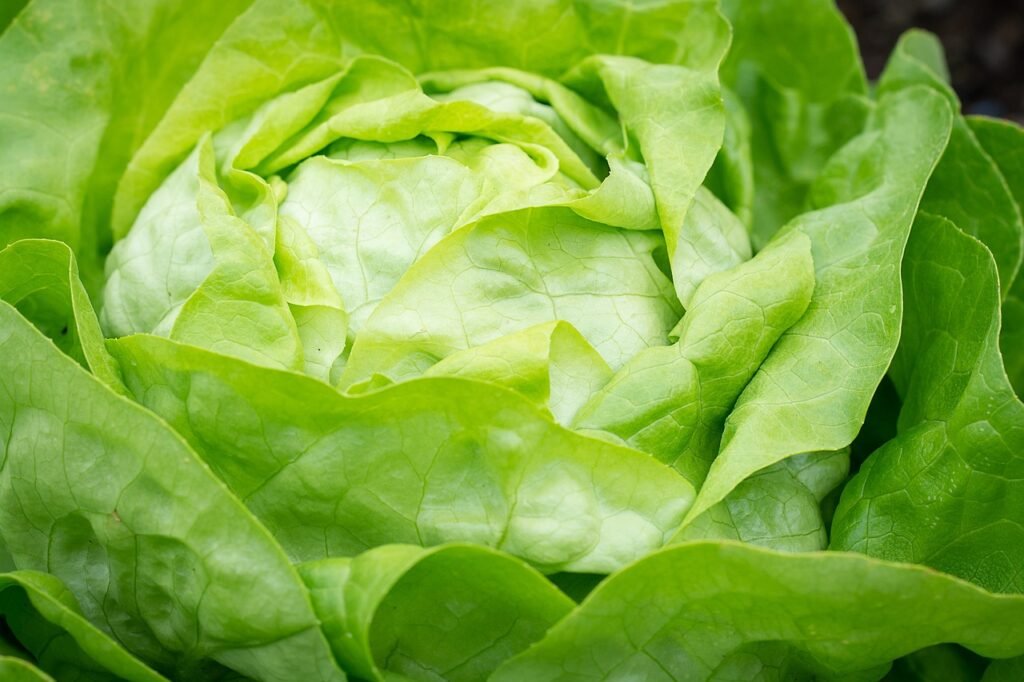
When to Harvest Lettuce?
Determining the right time to harvest lettuce depends on the variety you are growing, whether it’s leaf lettuce, head lettuce, or crisp romaine. Understanding the maturity indicators, seasons, and optimal harvest time is crucial for maximizing yield and flavor.
- Leaf lettuce is typically ready to harvest when the outer leaves are large enough to eat, while maintaining the younger inner leaves for continuous growth.
- For head lettuce, look for a firm head that feels heavy for its size, indicating it is mature.
- As for Romaine lettuce, wait until the leaves are at least 6-8 inches tall before cutting them near the base.
It’s essential to harvest in the morning when temperatures are cooler to retain crispness and flavor.
Harvesting Leaf Lettuce
Harvesting leaf lettuce involves selectively picking individual leaves as they reach the desired size and maturity. Make regular harvests throughout the growing season for a continuous supply of fresh, nutritious leaves.
By picking mature leaves regularly, you not only encourage new growth but also prevent the plants from bolting. Mature leaves are typically darker in color, have a firm texture, and can be easily plucked by gently pulling them away from the base of the plant. It’s essential to avoid damaging the surrounding foliage while harvesting to promote healthy regrowth.
Consider harvesting early in the morning or late in the evening during warmer seasons to preserve the crispness and flavor of the leaves.
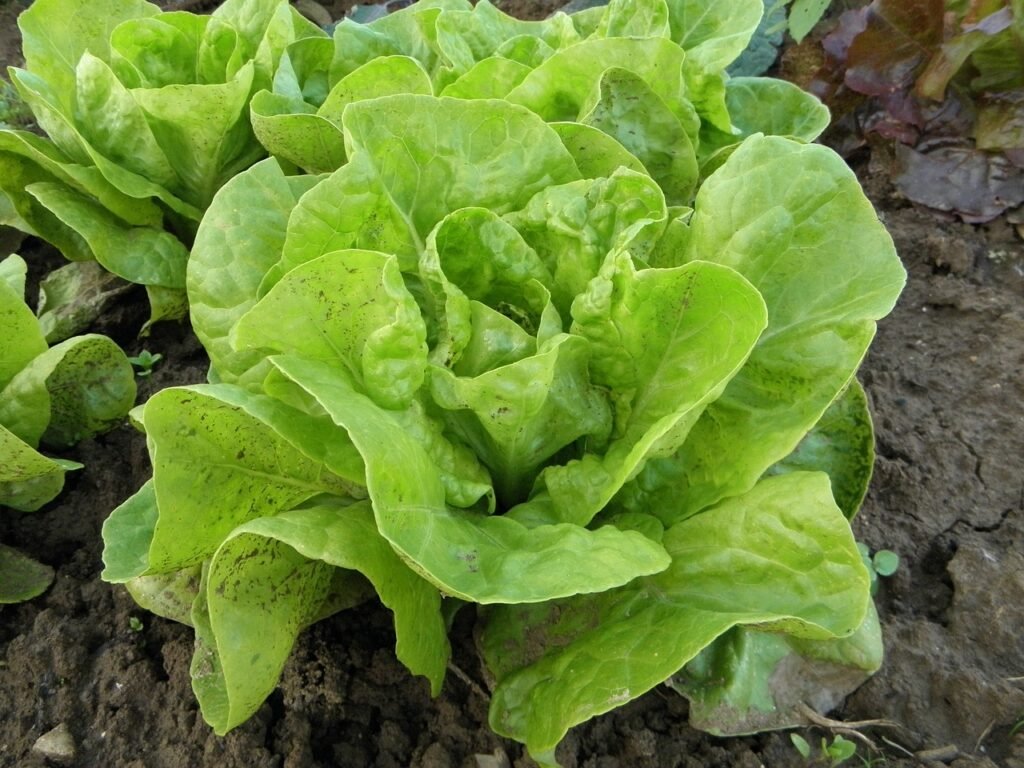
Harvesting Head Lettuce
Harvesting head lettuce involves cutting the entire head when it reaches a firm, compact form. Timing is crucial to ensure heads are neither too small nor overgrown, maintaining optimal taste and texture.
- As the head lettuce matures, keep a close eye on its size and density. Look for indicators like color consistency, firmness to touch, and well-developed leaves.
- The best time to harvest head lettuce is usually when it forms a tight, dense head without signs of bolting or flowering. Use a sharp knife to cut the head cleanly at the base, leaving a short stem intact.
It’s recommended to harvest in the cooler parts of the day to prevent wilting and ensure freshness. During warmer seasons, consider harvesting earlier in the morning or later in the evening for better results.
Harvesting Romaine Lettuce
Romaine lettuce is best harvested by cutting the outer leaves first, allowing the inner leaves to continue growing for prolonged harvests. This method ensures a constant supply of crisp, fresh leaves for your culinary creations.
By selectively picking the outer leaves of Romaine lettuce, you enable the plant to channel its energy towards the development of new leaves, thus supporting a longer harvest period.
To maintain the freshness and crispness of Romaine leaves post-harvest, it is advisable to immerse them in ice water for a few minutes before storage. This crispness-preserving technique helps to revitalize the leaves and keep them vibrant.
Optimal harvest time for Romaine lettuce is usually when the outer leaves have reached a desirable size but are still tender, ensuring a balance between yield and quality.
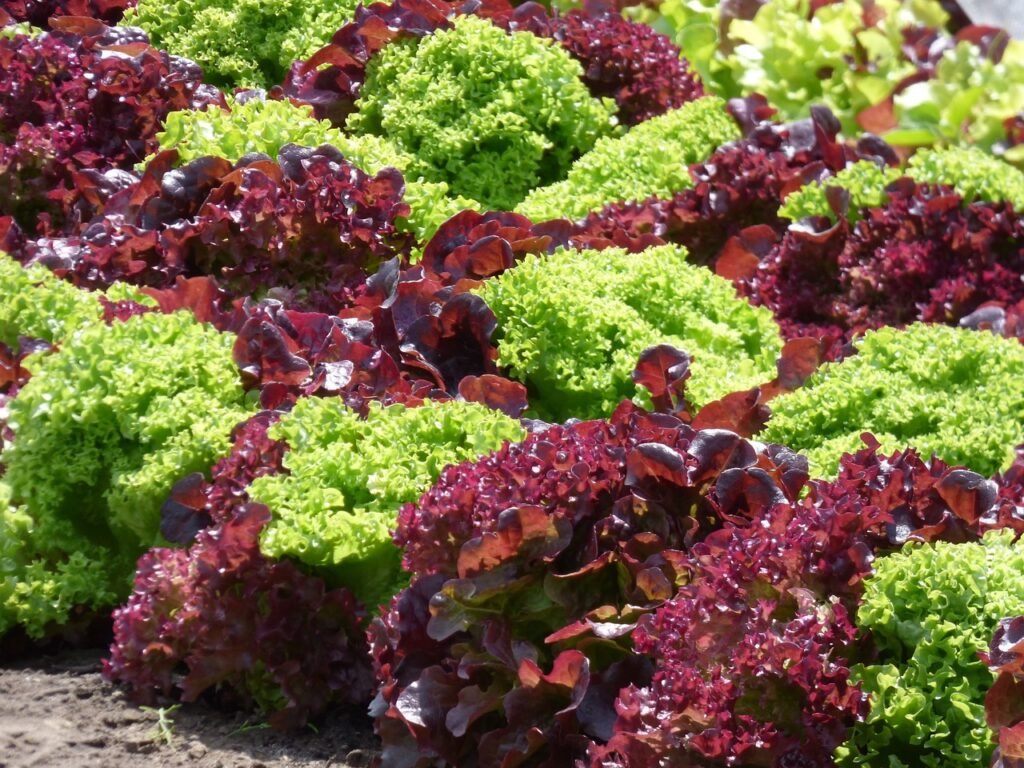
Health Benefits of Lettuce
Lettuce offers an array of health benefits, from being a rich source of essential vitamins and minerals to promoting various aspects of well-being. Its high fiber content aids in digestion, while the presence of antioxidants contributes to its potential anticancer properties.
Lettuce is particularly known for its low-calorie content, making it a fantastic addition to any weight management plan. The high water content in lettuce helps in hydration, while its vitamin K content supports bone health. The folate in lettuce is crucial for cell growth and metabolism, playing a key role in overall health. Including a variety of lettuce in your diet can also help reduce inflammation and lower the risk of chronic diseases.
Rich in Vitamins and Minerals
Lettuce is a nutritional powerhouse, packed with vitamins such as A, C, and K, along with essential minerals like calcium and iron. Incorporating this leafy green into your diet can significantly contribute to meeting your daily nutrient requirements.
Vitamin A in lettuce plays a crucial role in promoting healthy vision and immune function, while vitamin C boosts collagen production and aids in wound healing. Vitamin K found in lettuce supports proper blood clotting and bone health.
When it comes to minerals, calcium is essential for strong bones and teeth, and iron is vital for oxygen transport in the body. Including lettuce in your meals not only adds variety and flavor but also helps ensure a well-rounded intake of these key nutrients.
Good Source of Antioxidants
Antioxidants present in lettuce play a vital role in combating oxidative stress and reducing inflammation in the body. These compounds contribute to the potential anticancer properties of lettuce and support immune system function for overall health.
Including lettuce in your diet provides a natural way to boost your antioxidant intake. Antioxidants help neutralize free radicals that can cause cellular damage and lead to various chronic diseases. By consuming antioxidant-rich foods like lettuce regularly, you can help protect your cells from harm and lower the risk of conditions such as heart disease, diabetes, and certain cancers.
The immune-boosting properties of lettuce’s antioxidants can strengthen your body’s defense mechanisms, promoting better overall well-being and vitality.
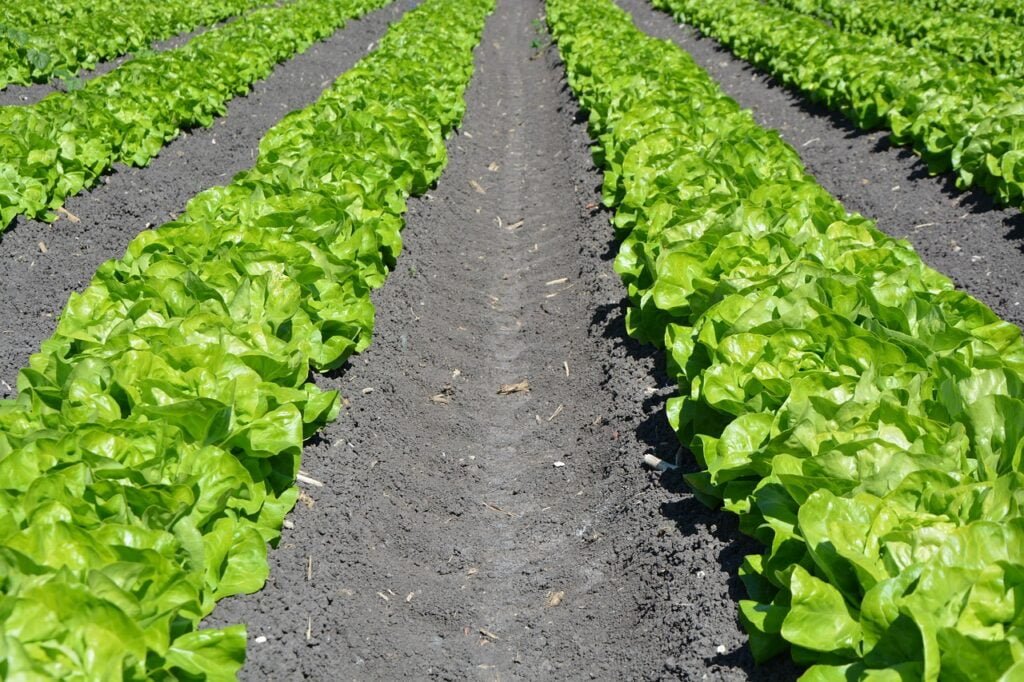
Promotes Healthy Digestion
The high fiber content in lettuce promotes healthy digestion by aiding in regular bowel movements and supporting gut health. Incorporating lettuce into your meals can increase fiber intake, along with essential vitamins and minerals vital for digestive well-being.
Fiber plays a crucial role in digestive health as it helps to bulk up stool, making it easier to pass through the intestines. The vitamins and minerals present in lettuce, such as vitamin A, vitamin K, and potassium, contribute to overall gut function and health. By including lettuce in your diet, you not only boost your fiber intake but also provide your body with a diverse range of nutrients that are essential for maintaining a healthy digestive system.
Helps in Weight Loss
Lettuce is an excellent addition to weight loss diets due to its low-calorie nature, high fiber content, and satiating properties. Including lettuce in meals can help control hunger, reduce calorie intake, and support weight management efforts.
Lettuce is rich in water content, adding bulk to meals without significantly increasing calorie consumption. This makes it a valuable tool for those looking to create a sense of fullness while keeping calorie counts low.
The high fiber density in lettuce also aids in digestion and promotes gut health, contributing to overall well-being. By incorporating lettuce into daily meals, individuals can enjoy a nutrient-dense food that not only supports weight loss but also provides essential vitamins and minerals for a balanced diet.
May Lower Risk of Chronic Diseases
Regular consumption of lettuce may contribute to lowering the risk of chronic diseases, including heart conditionsand certain cancers, due to its antioxidant-rich profile and beneficial nutrients. The vitamins and minerals in lettuce play a key role in supporting overall health and well-being.
The presence of vitamin K in lettuce aids in bone health and blood clotting, further enhancing its disease prevention capabilities. The fiber content in lettuce promotes digestive health and helps in maintaining a healthy weight, which are essential factors in reducing the risk of chronic conditions like cardiovascular diseases.
Including a variety of lettuce types in your diet can provide a range of antioxidants, such as beta-carotene and vitamin C, that actively combat oxidative stress and inflammation, crucial for heart health and cancer prevention.

Adding More Lettuce To Your Diet
Incorporating more lettuce into your diet is a refreshing way to boost your intake of vitamins and minerals. Lettuce isn’t just for salads; its versatility in the kitchen is vast, offering numerous ways to enjoy its crisp, nutritious goodness:
- Salads: The most common use, where lettuce varieties can be mixed with other greens, vegetables, fruits, nuts, and dressings for diverse flavors and textures.
- Wraps: Large lettuce leaves, like romaine or butter lettuce, make perfect low-carb wraps for fillings like chicken, beef, tofu, or veggies.
- Grilled: Try grilling whole romaine hearts for a smoky, charred flavor, drizzled with a vinaigrette or Caesar dressing.
- Soups: Chiffonade of lettuce can be added to soups for a fresh, green boost right before serving.
- Smoothies: Add a handful of lettuce to your smoothies for a nutrient-packed, hydrating addition that blends well with fruits and vegetables.
- Sandwiches and Burgers: Swap out bread and buns for lettuce leaves to wrap around your favorite sandwich or burger ingredients.
By exploring these creative uses, you can easily incorporate more lettuce into your meals, enjoying the benefits of this leafy green in a variety of delicious, healthy ways.
Lettuce Growing Guide Wrap Up
Embarking on the journey of growing lettuce brings the joy of harvesting fresh, crisp greens straight from your garden. Whether you’re a novice or an experienced gardener, the variety and versatility of lettuce make it a rewarding crop to cultivate.
To dive deeper into the world of vegetable gardening and discover more about nurturing a bountiful garden, we invite you to explore our blog. By subscribing to our newsletter, you’ll receive timely tips, insightful articles, and the latest gardening trends.
Check out our extensive collection of vegetable growing guides and join a community passionate about gardening. With Garden Guys, you’ll find everything you need to grow your green thumb and enjoy a healthier, more sustainable lifestyle. Let’s grow together, one leaf at a time.
Frequently Asked Questions
The best way to grow lettuce from seed is to start by choosing a location with partial shade and well-draining soil. Sow the seeds directly into the ground, about 1/4 inch deep and 1 inch apart. Keep the soil moist but not waterlogged, and thin out the seedlings once they grow to about 2 inches tall.
Lettuce typically takes 45-55 days to mature and be ready for harvest. However, the exact time may vary depending on the variety of lettuce you are growing and the weather conditions. Keep an eye on your lettuce and harvest when the leaves are full and firm.
Homegrown lettuce is packed with nutrients and has numerous health benefits. Lettuce is a good source of vitamins A, C, and K, as well as folate and iron. It is also low in calories and high in fiber, making it a great addition to a healthy diet.
The best time of day to water lettuce plants is in the morning, preferably before 10 am. This allows the plants to absorb the water and nutrients they need before the hot sun dries out the soil. Avoid watering in the evening as this can lead to fungal diseases.
There are a few ways to prevent pests from damaging your lettuce plants. One option is to use natural pest control methods such as planting companion plants that repel pests. You can also cover your lettuce plants with a fine mesh netting to keep insects out.
Yes, you can grow lettuce indoors! Lettuce can be grown in pots or containers with good drainage and placed in a sunny spot in your home. It is important to monitor the soil moisture and provide adequate light for the plants to thrive. Indoor-grown lettuce may have a slightly different taste, but it is still nutritious and delicious!



